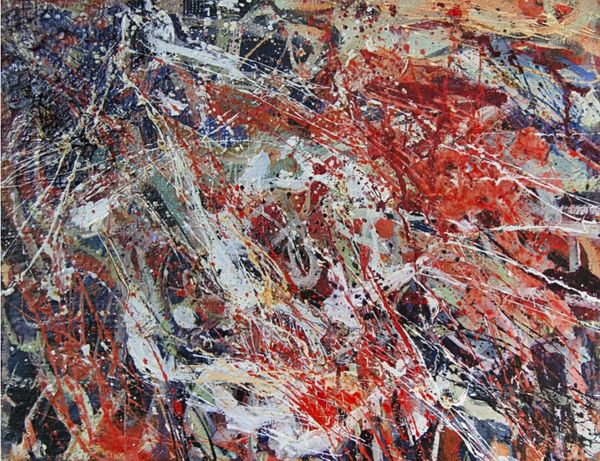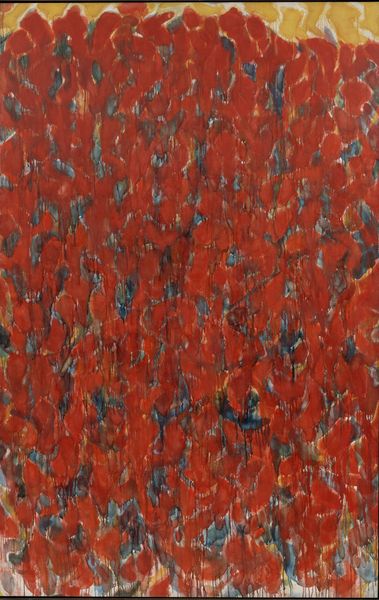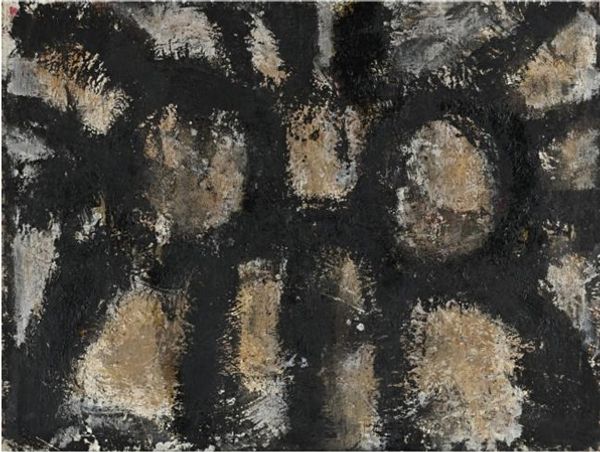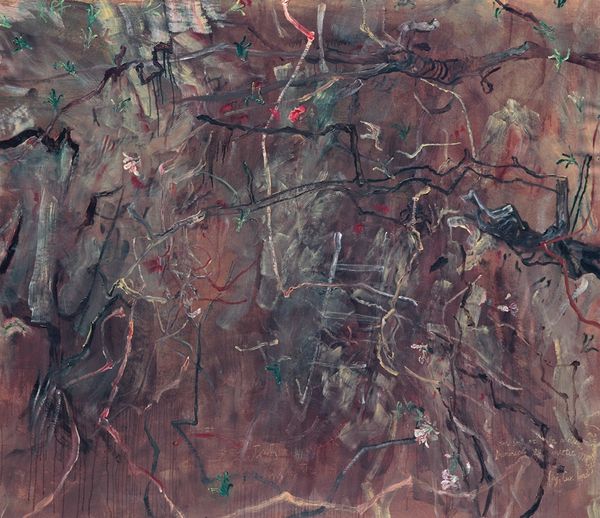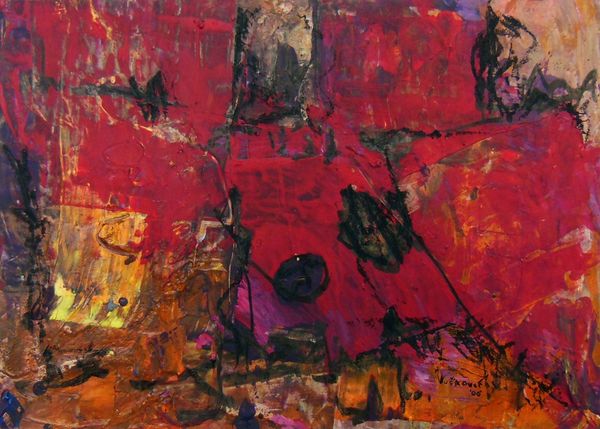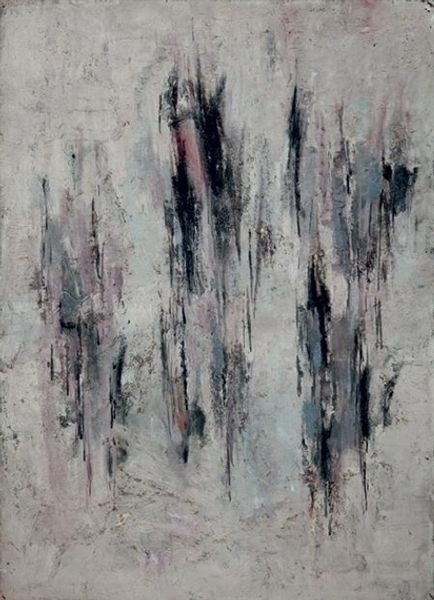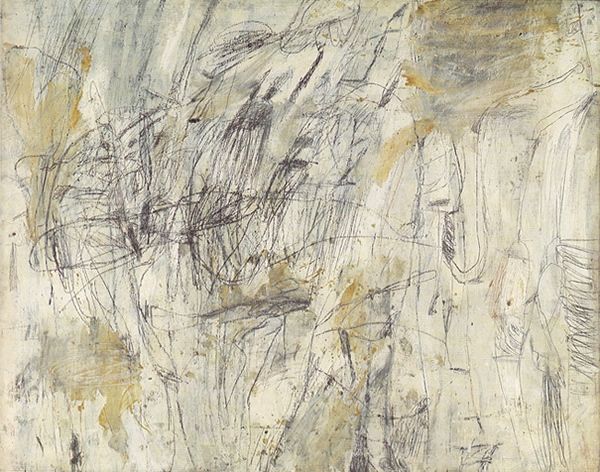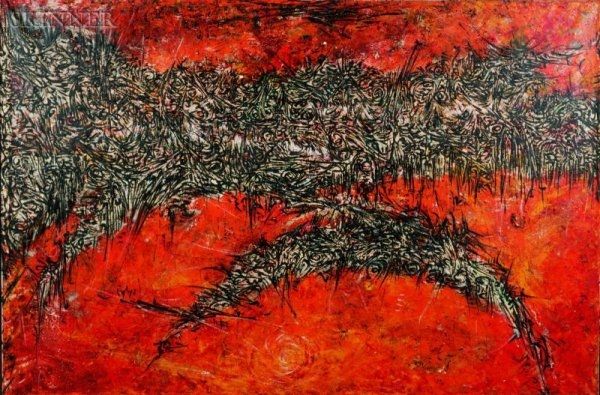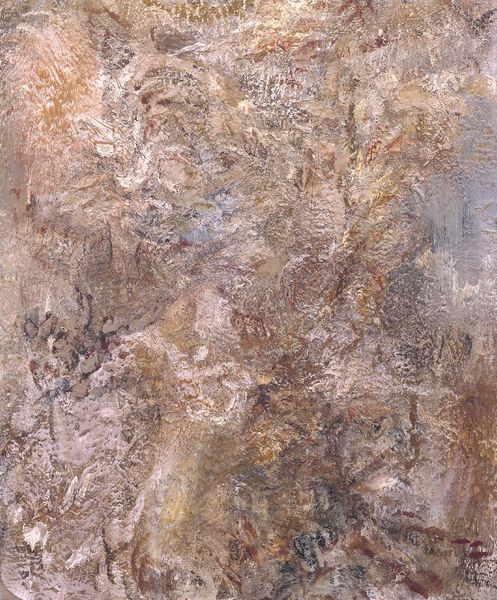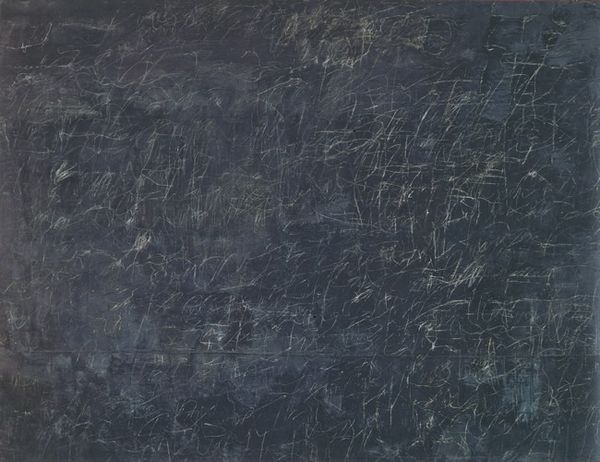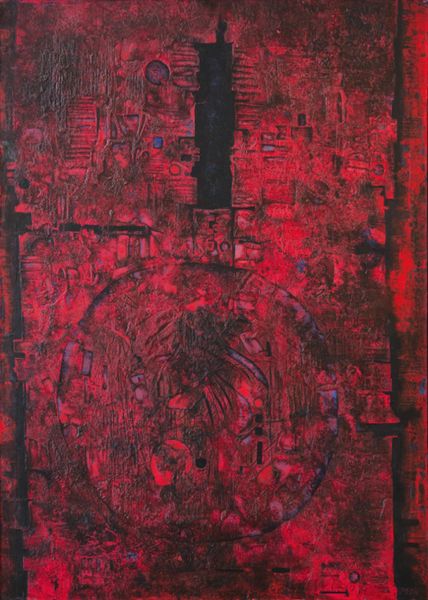
Copyright: Milton Resnick,Fair Use
Editor: We’re looking at Milton Resnick’s "Untitled," created in 1982, an acrylic on canvas piece. I’m struck by the thick layering of paint – the impasto creates a very tangible surface, and the red, black, and white feel…turbulent. What do you see in this piece? Curator: I appreciate your observation of turbulence. My focus immediately turns to the surface quality itself. Notice how the application of paint, rather than depicting any representational form, becomes the subject. It presents a clear material presence. What relationships might we establish, thinking through color theory, given Resnick's employment of a limited palette? Editor: Well, the red is definitely dominant. The black provides depth and contrast, and the white almost acts as a highlight, drawing the eye across the surface. It almost feels sculptural. Is it typical for abstract expressionists to prioritize texture like this? Curator: The textural density here aligns with the 'matter painting' trend within Abstract Expressionism, pushing beyond pure chromatic relationships toward emphasizing the physical properties of the paint. Can you trace a structural organization or geometry across this apparent chaos? Consider if it is all truly random. Editor: I do see what look like swirling, almost circular forms in places… So maybe not completely random, but still fairly unstructured? Curator: Precisely. We observe that though all-over composition techniques disavow overt structure, they reveal internal relationships between shapes, pigment viscosity, and directional strokes, constructing emergent forms. To truly apprehend it we look into internal formal coherence. Editor: I see what you mean. By looking at it from a formalist view I’m focusing on how the composition evokes emotion, instead of getting caught up in symbolism or hidden meanings. Curator: Exactly. It underscores the essence of abstract expressionism's self-referential quality: the medium *is* the message. This focus transforms the act of viewing from representational interpretation towards a phenomenological experience. Editor: Thank you, I really benefited from analyzing Resnick’s work with you! I will make sure to note how much texture affects the visual structure.
Comments
No comments
Be the first to comment and join the conversation on the ultimate creative platform.
